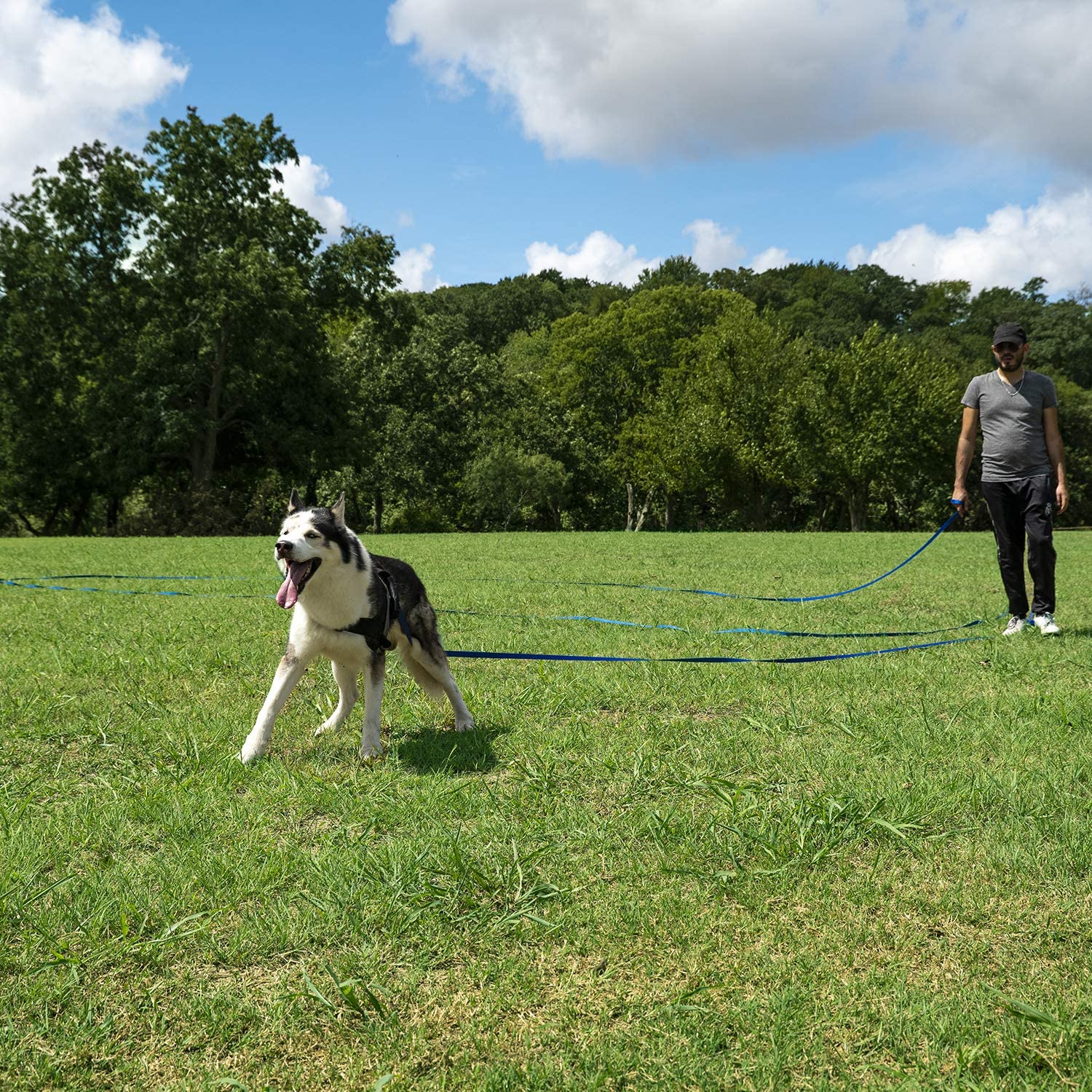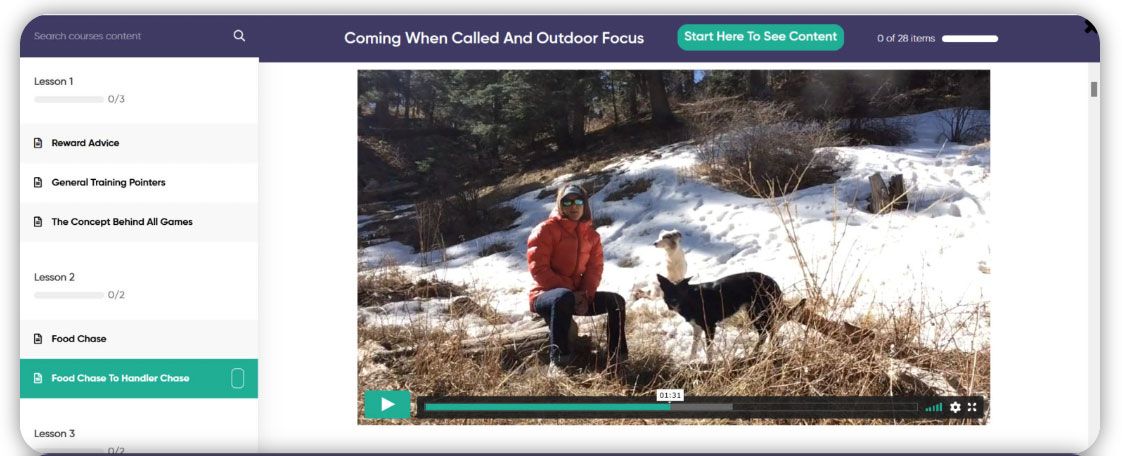
Shiba Inus are known for their independent and sometimes stubborn nature, which can make training them to come when called a challenge. However, teaching your Shiba Inu to come when called is a crucial skill for their safety and your peace of mind.
In this article, we will discuss effective methods for training your Shiba Inu to come when called, including positive reinforcement, consistency, and patience. With the right approach and a little bit of time and effort, you can teach your Shiba Inu to reliably come when called, no matter the distractions or temptations.
Note: For a complete training, we highly recommend this SpiritDog Online Training Course “Coming When Called”.
1. Start with a Strong Foundation
Before you begin training your shiba inu to come when called, it’s crucial to establish a strong bond with your pet. Spend time playing with your dog, engaging in activities they enjoy, and providing positive reinforcement through praise and treats. Building trust and a strong connection with your shiba inu will make them more likely to respond positively to your commands.
2. Choose a Distinct Command Word
Select a specific word or phrase for the recall command, such as “come” or “here.” Ensure that the command is distinct from other commands you use and that all family members use the same word consistently. Consistency is critical to avoid confusing your shiba inu and ensuring that they understand what you expect from them.
3. Begin Training Your Shiba Inu in a Controlled Environment
Start training your shiba inu to come when called in a controlled, distraction-free environment like your home or a fenced yard. In the early stages of training, it’s essential to minimize distractions to help your dog focus on learning the new command. As your dog becomes more reliable in responding to the recall command, gradually introduce distractions and practice in various environments.
4. Use Positive Reinforcement with Your Shiba Inu
When training your shiba inu to come when called, always use positive reinforcement techniques. Reward your pup with praise, treats, or playtime when they respond to your recall command. This will help create a positive association with the command and motivate your dog to respond consistently. Remember to be patient and consistent in your training, as it may take time for your dog to master the recall command.
If you’re using treats, these are currently the most popular training treats on Amazon.
5. Gradually Increase Distance and Distractions
As your shiba inu becomes more reliable in responding to the recall command in a controlled environment, begin to increase the distance between you and your dog during training sessions. Practice calling your dog from various distances and gradually introduce distractions, such as other dogs, people, or toys. This will help your dog learn to respond to the command even in challenging situations.
Related: Looking for the fastest way to train your shiba inu to come when called? Try this video course.
6. Make Yourself Interesting and Rewarding to Your Shiba Inu
To encourage your shiba inu to come when called, make yourself more appealing and rewarding to your dog. Use an enthusiastic, high-pitched voice when calling your dog, and reward them with a treat or praise when they respond. You can also try running away from your dog when calling them, as this can entice your dog to chase after you and respond to the recall command.
7. Never Punish Your Shiba Inu for Coming When Called
It’s essential to avoid punishing your shiba inu if they do not immediately respond to the recall command or if they come to you slowly. Punishing your dog can create a negative association with the command and make them less likely to respond in the future. Instead, be patient and continue to practice and reinforce the command using positive reinforcement techniques.
8. Practice the Recall Command Regularly with Your Shiba Inu
Consistent practice is crucial for training your shiba inu to come when called. Incorporate recall training into your dog’s daily routine, and practice the command in various environments and situations. This will help reinforce the behavior and make it more reliable over time.
9. Use a Long Training Leash on Your Shiba Inu
When transitioning from a controlled environment to a more open space, consider using a long training leash to maintain control over your shiba inu while they learn to respond to the recall command. This will help you avoid losing control of your dog and provide a safety measure as you gradually increase the distance and distractions during training sessions.
This is the most popular long training leash on Amazon.
10. Be Patient and Persistent with Your Shiba Inu
Training your shiba inu to come when called takes time, patience, and persistence. Some dogs may learn the command quickly, while others may require more time and consistent practice. Be patient with your dog and maintain a positive attitude during training sessions. Remember that every dog is unique, and the key to success is consistent practice and positive reinforcement.
11. Use a Professional Online Shiba Inu Training Course
While this article provides many helpful tips for training your shiba inu, you can increase your chances of success by enlisting the help of a professional online dog trainer. We love the SpiritDog online courses, since its includes unlimited questions with a real dog trainer.
You can check out their Teach Your Shiba Inu to Come Online Course Here
In conclusion, training your Shiba Inu to come when called is an essential skill that can benefit both you and your furry companion. With consistent practice, patience, and positive reinforcement, you can teach your Shiba Inu to respond reliably to your recall command. Remember to make training sessions short and fun, use high-value treats and rewards, and gradually increase distractions and distance to improve your dog’s obedience. With time and effort, your Shiba Inu will learn to associate coming when called with positive experiences, resulting in a happier and safer relationship between you and your pet.
More Frequently Asked Questions For Training Your Shiba Inu
1. How can I train my Shiba Inu to stop barking excessively?
Shiba Inus are known to be vocal dogs, and they may bark for a variety of reasons, such as boredom, anxiety, or territorial behavior. Excessive barking can be a nuisance, but it can also indicate an underlying issue that needs to be addressed.
To train your Shiba Inu to stop barking excessively, you first need to identify the trigger for their barking. Once you understand why your dog is barking, you can use different training techniques to modify their behavior.
One effective way to stop excessive barking is to teach your Shiba Inu the “quiet” command. Start by waiting for your dog to start barking, and then say “quiet” in a firm but calm voice. When your dog stops barking, reward them with a treat and praise.
Consistency is key when it comes to training your Shiba Inu to stop barking excessively. You need to practice the “quiet” command consistently, and use positive reinforcement to encourage your dog to modify their behavior. You can also try providing your dog with mental stimulation and plenty of exercise to reduce boredom and anxiety, which can help prevent excessive barking.
2. How can I train my Shiba Inu to walk on a leash without pulling?
Shiba Inus are known for their strong-willed and independent nature, which can make leash training a challenge. However, with patience and consistency, you can train your Shiba Inu to walk on a leash without pulling.
The first step in leash training is to choose the right equipment. A properly fitting harness or collar can help you control your dog’s movements without causing discomfort or pain.
Next, start by letting your Shiba Inu get comfortable with the leash and harness. Allow them to sniff and explore the equipment, and reward them with treats and praise for positive behavior.
Once your dog is comfortable with the leash and harness, start practicing short walks in a quiet, low-distraction environment. Use positive reinforcement to encourage your dog to walk by your side without pulling, and reward them with treats and praise when they exhibit good behavior.
Consistency is key when it comes to leash training your Shiba Inu. You should practice regularly, gradually increasing the length and difficulty of your walks as your dog becomes more comfortable with the process. Be patient and persistent, and remember to always use positive reinforcement to encourage good behavior.
3. How can I train my Shiba Inu to be less aggressive towards other dogs?
While Shiba Inus are generally friendly and sociable dogs, some may exhibit aggression towards other dogs. This behavior can be a result of fear, anxiety, or territoriality, and it can be dangerous if not addressed.
To train your Shiba Inu to be less aggressive towards other dogs, you first need to identify the trigger for their behavior. Once you understand why your dog is acting aggressively, you can use different training techniques to modify their behavior.
One effective way to address aggression towards other dogs is to use desensitization and counter-conditioning techniques. This involves exposing your Shiba Inu to other dogs in a controlled environment, and rewarding them with treats and praise for positive behavior.
Start by introducing your dog to other dogs from a distance, and gradually decrease the distance as your dog becomes more comfortable. Reward your dog with treats and praise for remaining calm and non-aggressive.
Consistency is key when it comes to training your Shiba Inu to be less aggressive towards other dogs. You should practice regularly, gradually increasing the difficulty of the training sessions as your dog becomes more comfortable.
4. What’s the best online course for teaching a shiba inu to come when called? At iHeartDogs, we recommend the SpiritDog online course “Coming When Called.” The course includes unlimited questions with a real dog trainer.
iHeartDogs is reader supported. Our articles contain affiliate links where we are paid a small commission for linking to a product at no additional cost to the reader.



 Toledo, United States.
Toledo, United States.